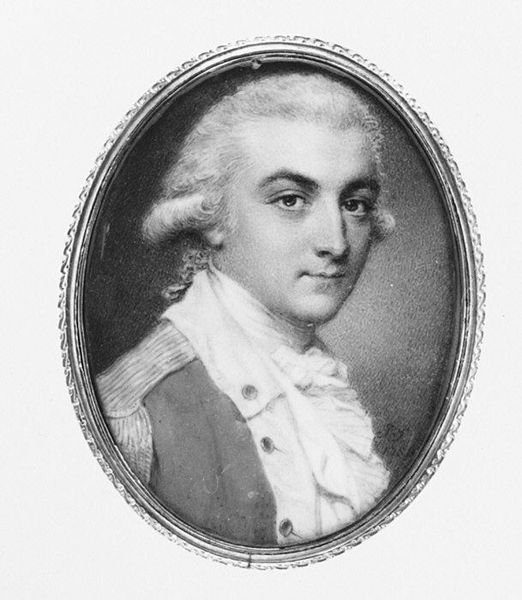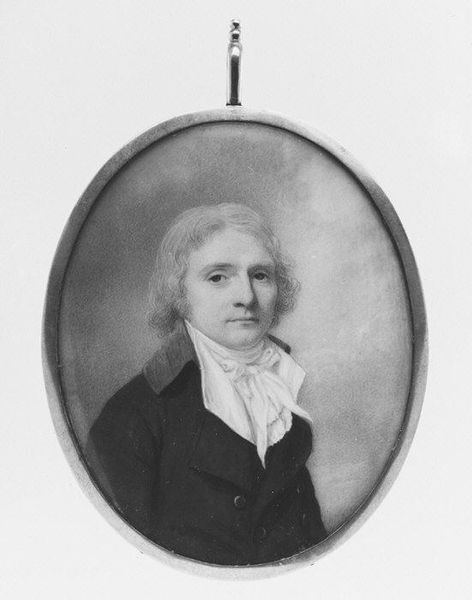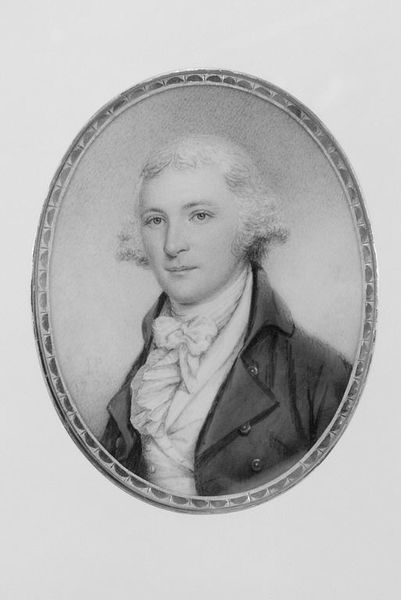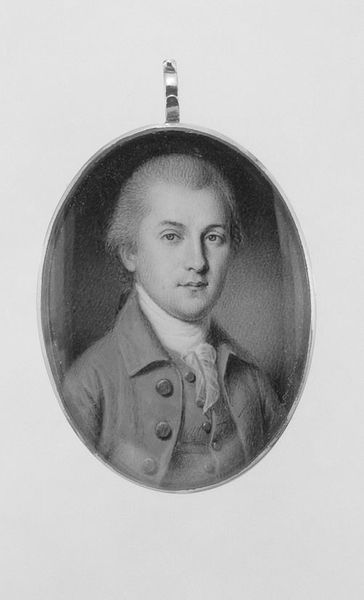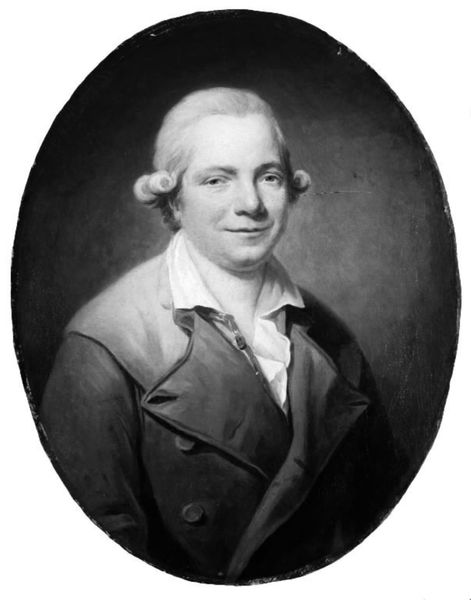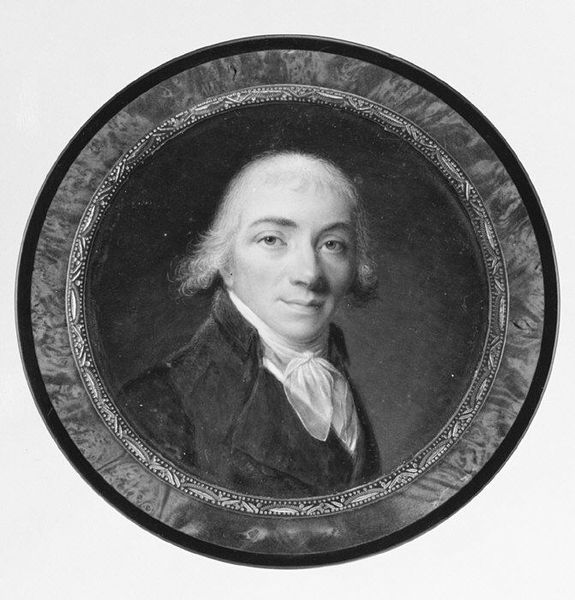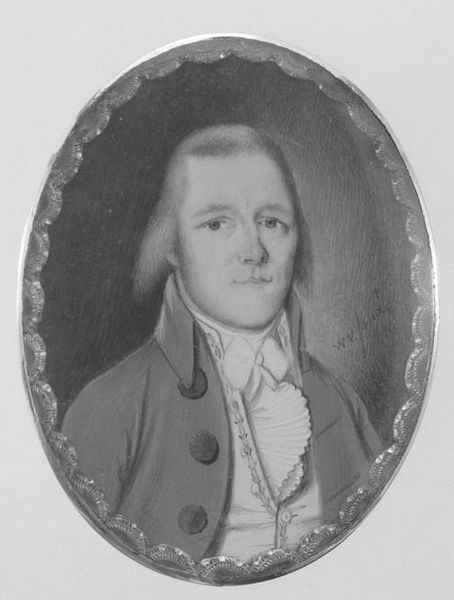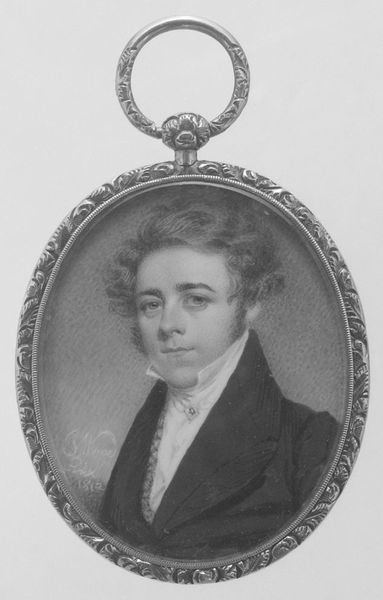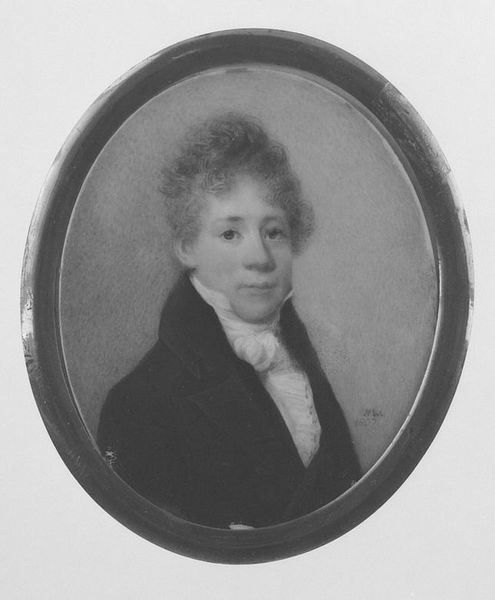
oil-paint
#
portrait
#
neoclacissism
#
portrait
#
oil-paint
#
miniature
Dimensions: Oval, 1 3/8 x 1 1/8 in. (36 x 30 mm)
Copyright: Public Domain
Curator: Let’s turn our attention to "A Man with the Initials AC," a captivating miniature painted in 1774, and attributed to John Bogle. It currently resides at the Metropolitan Museum of Art. What's your first impression? Editor: Strikingly austere, wouldn't you agree? There's a palpable sense of restrained composure, rendered in very delicate tones of grey and brown. The sharp contrast against the dark backdrop lends an undeniable intensity to the sitter's gaze. Curator: Absolutely. The painting adheres to the conventions of Neoclassical portraiture, a style gaining traction at the time. It's essential to understand the social implications here. Portraiture became a potent symbol of status, mirroring a desire for stability amid shifting societal landscapes. Commissioning portraits served to reinforce social order. Editor: Precisely. And if we examine the composition itself, the oval frame creates a sense of intimacy, almost as if capturing a private moment. His gaze suggests confidence, further highlighted by the understated, carefully painted attire—simple elegance defining status. Curator: Note, also, how Bogle’s technique reinforces Neoclassical ideals: smooth, polished surfaces; clean lines; subdued palette, enhancing the overall effect. These portraits became tools for constructing identity and asserting authority in a changing world. Editor: It is a fascinating period for miniature portraits such as these, with many having survived, suggesting these may have been keepsakes or gifts of importance. Their portability means we also have less context of where such objects may have been situated within homes or civic space. Curator: In the realm of reception theory, this portrait prompts inquiry into how viewers’ interpretations may have been influenced by evolving ideals surrounding masculine identity in the late 18th century. And to consider further how such images become signifiers, not only in their original historical moment but across centuries, shaping subsequent notions of personhood. Editor: Thinking about art and identity is what makes historical images continually interesting. Each viewing reveals different details in the subjects that continue to prompt new ideas, theories and conversation. Curator: Precisely, seeing its significance lies within not just what's depicted but how those depictions perpetuate across time.
Comments
No comments
Be the first to comment and join the conversation on the ultimate creative platform.
